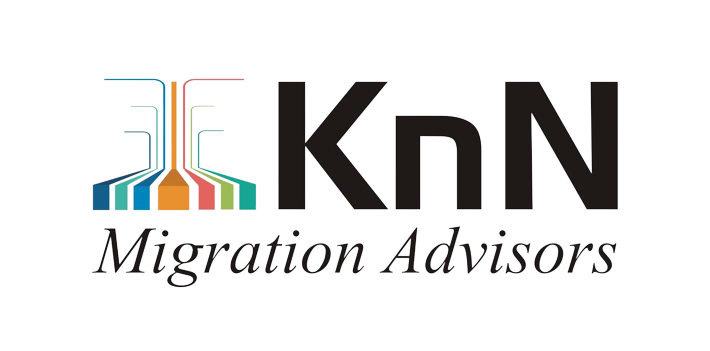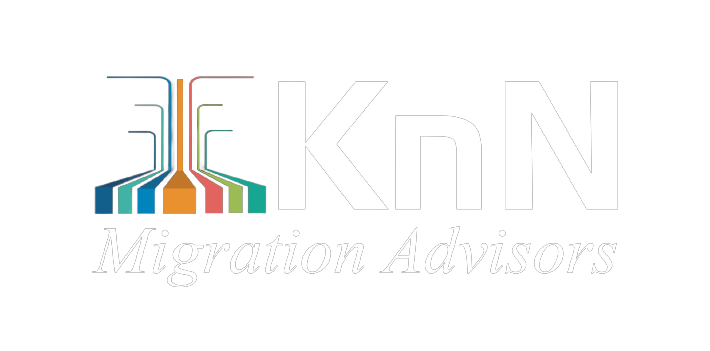The Contributory Parent Visa (Subclass 143) might just be the key to turning that dream into reality!
Understanding the 143 Visa: Eligibility & Requirements
In this all-encompassing guide, we’ll unravel the intricacies of sponsoring your parents for permanent residency Down Under, providing you with the essential knowledge to navigate the process with confidence. The Contributory Parent Visa (Subclass 143) is designed to reunite families by allowing Australian citizens, permanent residents, or eligible New Zealand citizens to sponsor their parents for permanent residency in Australia. To embark on this journey, it’s crucial to comprehend the eligibility criteria and requirements that accompany this visa subclass.
Who Can Sponsor Parents Visa 143?
As an Australian citizen, settled permanent resident, or eligible New Zealand citizen, you have the privilege of sponsoring your parents for the Contributory Parent Visa 143. However, it’s essential to meet certain prerequisites and obligations to fulfil this role effectively.
Meeting the Balance of Family Test
One of the primary requirements for the Contributory Parent Visa (Subclass 143) is satisfying the Balance of Family Test. This test assesses the extent of your family ties in Australia compared to any other country, ensuring that the majority of your parents’ children are settled in Australia as citizens, permanent residents, or eligible New Zealand citizens.
Financial Requirements & Sponsorship Costs
Sponsoring your parents for the Contributory Parent Visa 143) entails significant financial responsibilities. From application fees to assurance of support bonds, it’s imperative to understand the financial requirements and sponsorship costs associated with this visa subclass.
Age & Health Considerations
Age and health play pivotal roles in determining eligibility for the Contributory Parent Visa (Subclass 143). While there are no age restrictions for applicants, health assessments are mandatory for their parents to ensure they meet the health criteria set by the Australian government.
Character and Police Checks
Maintaining a clean record is essential when applying for the Contributory Parent Visa 143. Both sponsors and their parents must undergo character and police checks to verify their suitability for permanent residency in Australia. Contributory offers a pathway for parents to join their families in Australia and embrace the joys of living in the land Down Under. By understanding the eligibility criteria, meeting the financial obligations, and adhering to health and character requirements, you can navigate the visa application process smoothly and reunite with your loved ones in Australia. So, why wait? Take the first step towards bringing your family closer together and start on the journey to sponsor your parents for permanent residency in Australia today!
Choosing the Right Path for Your Family
Let’s face it, navigating the world of visas can be a real head-scratcher, especially when it comes to bringing your folks over to Australia. So, if you’re wondering what your best bet is for sponsoring your parents, you’re not alone! This section will break down the key differences between the Contributory Parent Visa 143 and other options, helping you pick the path that’s right for your family.
Weighing the Options
Speed Vs Savings
143 visa is like express delivery with faster processing times but with a heftier price tag. There are higher visa fees and a significant upfront bond involved. However, the application can only be submitted from outside Australia.
103 visa is a more budget-friendly option, like regular mail. While processing times are typically longer, the upfront costs are lower. However, the application can only be submitted from within Australia.
In the end, what matters the most is what you need to speed or savings. The choice is yours, ultimately, the best visa for your parents depends on your priorities. Do you need them to join you quickly, even if it means paying more, or is affordability more important, even if it means waiting a bit longer? It’s always wise to consult a registered migration agent to ensure you choose the most suitable visa path for your parents.
Considering Temporary Reunions
A Flexible Option
Maybe permanent residency isn’t the immediate goal, or perhaps you just want some quality time with your parents. If that’s the case, temporary visas like the Visitor Visa (Subclass 600) or the Parent Visitor Visa (Subclass 600) could be a good fit. These visas allow shorter stays in Australia, giving you and your folks a chance to reconnect without the complexities of the permanent residency process.
Demystifying the Application Process: A Step-by-Step Guide for Bringing Your Folks Down Under
Let’s face it, paperwork and government applications can feel like trying to decipher an ancient riddle. But don’t worry, bringing your parents to Australia through the Contributory Parent Visa (Subclass 143) doesn’t have to be a mystery! This section will break down the application process into bite-sized chunks, making it a breeze to navigate.
The Contributory Parent Visa (Subclass 143) allows you to live permanently in Australia if you have a child settled there who can sponsor you. While there’s no point system, meeting specific criteria is crucial for a successful application.
Here’s a comprehensive breakdown of the process:
1. Sponsorship:
- You must have an eligible child to sponsor your application. This child needs to be:
- An Australian citizen
- An Australian permanent resident
- An eligible New Zealand citizen (meeting certain criteria)
- Your child will need to complete Form 40: Sponsorship Declaration which confirms their willingness to financially support you upon arrival in Australia.
2. Balance of Family Test:
- This test assesses your family ties in Australia. You must demonstrate that:
- At least half of your children (including adopted and step-children) are permanent residents or citizens of Australia.
- OR More of your children live in Australia than in any other single country.
3. Other Eligibility Requirements:
- Health Requirements: You’ll need to undergo health checks by a doctor approved by the Department of Home Affairs. This ensures you won’t incur significant costs on the Australian healthcare system.
- Character Requirements: Police checks from your country of residence (and any other countries you’ve lived in for more than 12 months in the past ten years) will be required to demonstrate good character.
- Financial Requirements: You’ll need to provide evidence that your child (sponsor) can financially support you upon arrival in Australia. This may involve income tax documents, payslips, and bank statements of the sponsor.
- Assurance of Support: Your sponsor will likely need to sign an Assurance of Support document, guaranteeing financial backing for a set period (usually 10 years).
- Health Insurance: You’ll typically need to have overseas health insurance that covers during the processing of your Visa application.
- Australian Values Statement: You’ll need to sign a document acknowledging your commitment to Australian values like a fair go, respect for the law, and parliamentary democracy.
- Debt to the Australian Government: You cannot have any outstanding debts to the Australian government.
- Previous Visa Cancellations/Refusals: Having a previous visa cancelled or application refused can complicate your application.
4. Application Process:
- The Department of Home Affairs (DHA) website provides the official application forms:
- Application Form for Parent Visa (Form 47PA) you will complete.
- Sponsorship Declaration (Form 40) your sponsor will complete.
- Gather all required documentation as per the DHA checklist.
- Important Note: Parent visa applications are capped and placed in a queue based on lodgement date. There are significant processing delays, so be prepared for a long wait (current processing times can be found on the DHA website https://immi.homeaffairs.gov.au/visas/getting-a-visa/visa-processing-times).
- Once your application is assessed as meeting the core criteria, you’ll be assigned a queue date. The DHA will contact you when it’s your turn for further processing.
- You may need to pay a second visa application fee installment before the visa is granted.
The Big Question: Processing Times & What to Expect
After submitting your application for the contributory Visa 143 processing time, and now you’re eagerly awaiting news. But how long will it take for your parents to finally join you in Australia?
Understanding the Queue System & Processing Timeframes
Unlike some “first-come, first-served” visa applications, it operates on a queue system. This means your application goes into a virtual queue, and processing happens based on the lodgement date (the day you submitted your application). The Department of Home Affairs publishes indicative processing times, but these can vary depending on factors like workload and individual circumstances.
Here’s a reality check: While contributory visas are generally processed faster as compared to other parent visa options, waiting times can still stretch into significant years. Be prepared for a potential delay, but stay optimistic!
Planning & Managing Expectations
The key to surviving the waiting game is setting realistic expectations. Here’s how to stay positive and prepared:
- Research Current Processing Times: The Department of Home Affairs website provides the most up-to-date information on processing times for the 143 visa. Check this regularly to stay informed.
- Prepare for the Long Haul: Be mentally prepared to wait, but don’t let it dampen your excitement! Focus on the joy of reuniting with your parents.
- Stay Connected with Your Folks: Distance doesn’t have to mean disconnection. Utilise video calls, messaging apps, and frequent emails to stay close to your parents during the waiting period.
- Apply for parent visa while being onshore: Parents who are already in Australia and meet the age requirement can apply for a parent visa onshore. This will grant them a bridging visa, allowing them to stay in Australia legally while their permanent visa application is processed.
Tips for Streamlining the Application Process (to Potentially Reduce Waiting Time)
While you can’t control the overall processing time, ensuring a complete and error-free application can potentially expedite the process:- Seek Professional Help: Consider engaging a registered migration agent who can guide you through the application process and ensure everything is submitted correctly.
- Double-Check Everything: Before submitting your application, meticulously review all documents for accuracy and completeness. Missing or incorrect information can lead to delays.
- Respond Promptly to Requests: If the Department of Home Affairs requires additional information, respond promptly to avoid stalling the process.
Seeking Professional Help: A Smooth Journey with a Migration Agent
The excitement of reuniting with your family in Australia can be tinged with the worry of navigating the visa application process. But fear not! Here’s where a registered migration agent steps in, becoming your trusted guide on your migration journey. A migration agent can assess your eligibility for the Contributory Parent Visa (Subclass 143) and identify any potential hurdles. Their expertise can help ensure your application avoids common mistakes that could delay your reunion.
Streamlining the Process & Saving Time
Migration agents are experts in visa applications. They’ll handle the paperwork, gather all the necessary documents, and ensure everything is submitted correctly. This can save you valuable time and reduce stress, allowing you to focus on the joy of reuniting with your parents.
Expert Guidance & Support Every Step of the Way To Get 143 Visa
From the initial consultation to the visa approval, a migration agent will be by your side. They’ll answer your questions, address any concerns, and offer reassurance throughout the process.
By partnering with a migration agent, you can navigate the complexities of the visa application process with confidence, knowing you have a knowledgeable professional working towards your dream of a life together in Australia.
Sources: https://immi.homeaffairs.gov.au/visas/getting-a-visa/visa-processing-times


